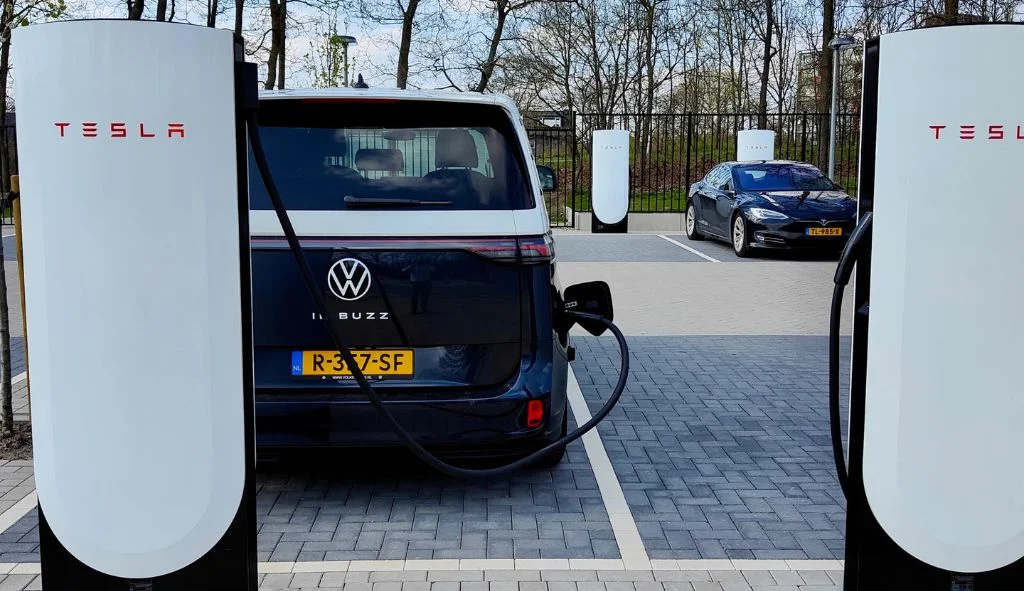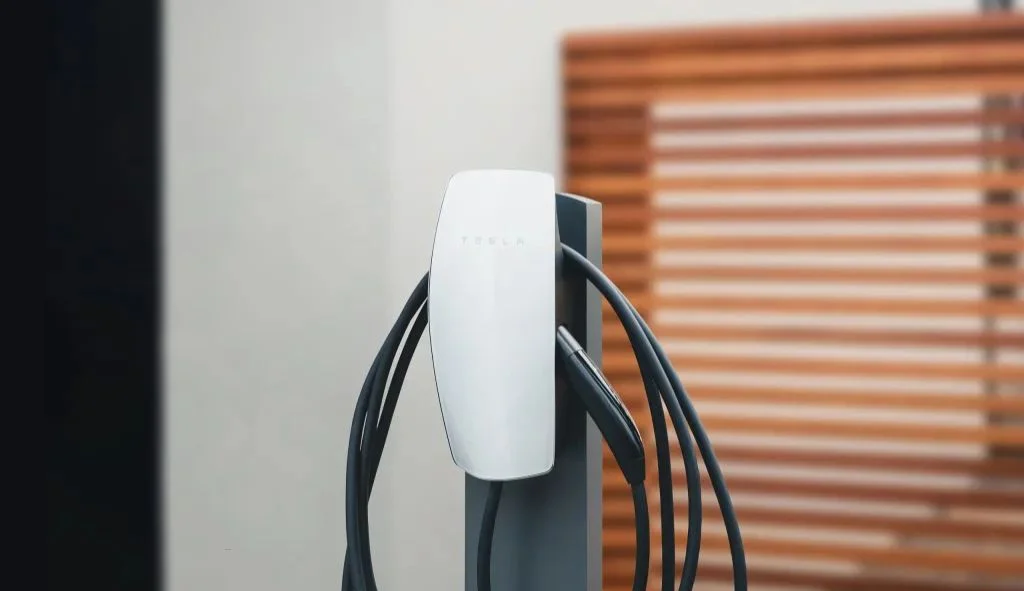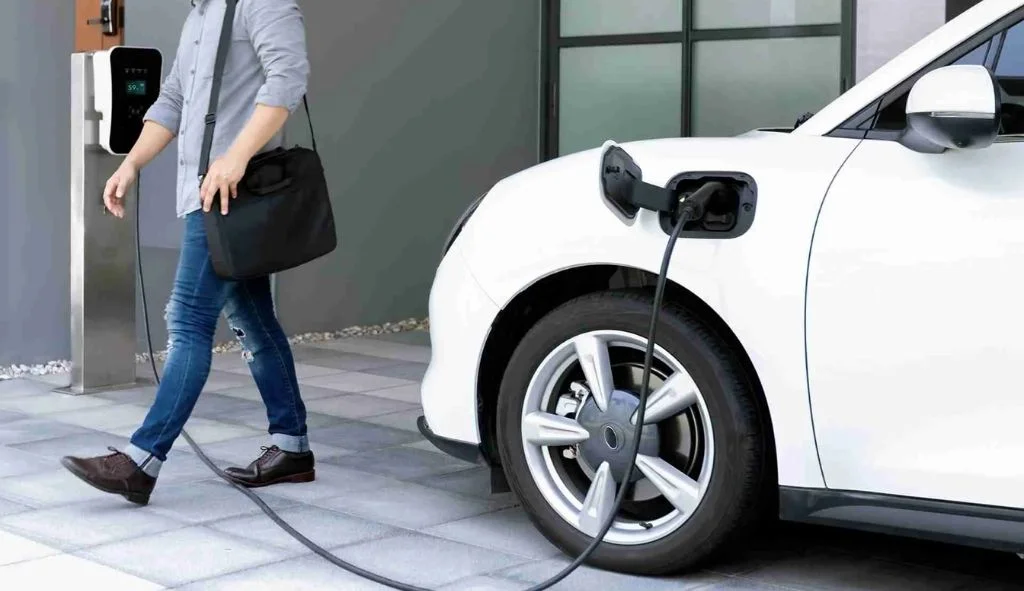A Tesla battery loses approximately 0.1-1% charge per day when parked, depending on settings. With optimal settings, Teslas can sit for weeks or months while losing minimal battery charge.
When you own a Tesla or are considering purchasing one, understanding how the battery performs when the vehicle isn’t in use is important. Unlike conventional cars that don’t consume fuel when parked, electric vehicles like Tesla continue to use some energy even when inactive. This phenomenon, often called “vampire drain,” affects how long you can leave your Tesla unplugged before needing to charge it again. This knowledge becomes especially valuable when planning for vacations, business trips, or any scenario where your Tesla might remain parked for extended periods.
What Causes Tesla Battery Drain When Parked
Tesla vehicles never fully “sleep” when parked. Instead, they maintain various systems in different states of readiness, which consumes energy from the battery.
Background Computer Processes
Several computer systems in a Tesla continue to function even when the car is parked. These systems monitor battery health, listen for over-the-air communications from Tesla, and prepare the vehicle for your return. The 12V battery, which powers essential systems, draws power from the main high-voltage battery pack when needed, contributing to the gradual drain.
Sentry Mode
Sentry Mode is one of the biggest power consumers when a Tesla is parked. This security feature uses cameras and sensors to monitor the surroundings of your parked vehicle and record any suspicious activity. While extremely useful for security purposes, it can drain approximately 1-2% of your battery per day.
Climate Control Features
Features like Cabin Overheat Protection and Preconditioning help maintain comfortable temperatures inside your Tesla. Cabin Overheat Protection prevents the interior from exceeding 105°F (40.5°C) for up to 12 hours after parking. These climate control features, though convenient, use significant energy from the battery.
Mobile App Connections
Each time you check your Tesla through the mobile app, the car “wakes up” from its low-power state, activating more systems and using more energy. Frequent app usage can increase battery drain substantially, especially if you’re checking your vehicle multiple times per day.
Measuring Tesla Battery Drain Rates
Understanding the actual rate at which your Tesla loses charge helps in planning for extended parking periods.
Normal Drain Rates
Under normal conditions with standard settings, a Tesla typically loses between 1-3% of its battery charge per day when parked. This rate varies based on environmental conditions, battery age, and enabled features.
Optimized Drain Rates
With energy-saving settings enabled (Sentry Mode off, Energy Saving mode on, Always Connected off), the drain rate can drop significantly to 0.1-0.5% per day. This means a fully charged Tesla could theoretically sit for months without dropping below a safe charge level.
Real-World Examples
Several Tesla owners have documented their experiences with battery drain during extended parking:
- A Model 3 owner left their car unplugged for 32 days and lost only 15% charge, averaging 0.47% per day
- Another Tesla was left for 83 days and went from 80% to 62% charge, averaging about 0.22% per day
- A YouTube creator documented leaving their Tesla for a week with proper settings and lost only 2% charge3
These real-world examples demonstrate that with proper preparation, a Tesla can maintain adequate charge levels for weeks or even months without charging.
How to Minimize Battery Drain When Parked?
Taking specific actions before leaving your Tesla parked for an extended period can significantly reduce battery drain.
Optimal Settings
To minimize vampire drain when your Tesla will be parked for an extended period, adjust these settings:
- Turn off Sentry Mode: This feature alone can save 1-2% battery per day
- Enable Energy Saving mode: Reduces the power consumption of the vehicle’s computers
- Disable Always Connected feature: Prevents the car from maintaining constant network communication
- Turn off Cabin Overheat Protection: While useful for short periods, it’s unnecessary for long-term parking
- Avoid checking the app frequently: Each time you open the Tesla app, it wakes the car up
Environmental Considerations
Where you park your Tesla can affect how much battery it uses while inactive:
- Indoor parking with moderate temperatures (60-80°F/15-27°C) results in minimal battery usage for temperature management
- Extreme temperatures (hot or cold) cause the battery management system to work harder, increasing drain
- Secure locations reduce the need for Sentry Mode, allowing you to safely disable this feature
Pre-Parking Preparation
Before leaving your Tesla for an extended period:
- Charge the battery to an optimal level (50-80% is ideal for long-term battery health)
- Clean the vehicle to reduce the need for immediate cleaning upon return
- Apply the appropriate settings as mentioned above
- Park in a secure, temperature-controlled area if possible
How Long Different Tesla Models Last Without Charging?
Battery capacity and efficiency differ between Tesla models, affecting how long they can remain parked without charging.
Model 3 and Model Y
The Model 3 and Model Y, with their newer battery technology, typically experience slightly lower drain rates. With optimal settings, these vehicles might lose only 0.1-0.5% battery per day. A Model 3 at 80% charge could theoretically last for 160 days before reaching a critical 20% level (assuming 0.5% daily drain).
Model S and Model X
The larger batteries in Model S and Model X provide more reserve capacity but may have slightly higher drain rates due to additional features. These vehicles typically lose 0.2-0.6% per day with energy-saving settings activated. A Model S at 80% charge could last approximately 133 days before reaching 20% (assuming 0.6% daily drain).
Older vs. Newer Tesla Vehicles
Newer Tesla vehicles benefit from improved power management systems that reduce vampire drain. Vehicles manufactured after 2018 typically show better power retention when parked compared to older models. Software updates have also improved efficiency in managing power consumption during inactive periods across all models.

Planning for Long-Term Parking
When you need to leave your Tesla parked for extended periods, proper planning ensures you’ll return to a vehicle with adequate charge.
Airport Parking Considerations
Many Tesla owners face the challenge of airport parking during vacations or business trips. For trips lasting:
- 1-7 days: A fully charged Tesla will easily maintain adequate battery levels with standard settings
- 8-14 days: Enable energy-saving settings and consider charging to 80-90% before parking
- 15+ days: Implement all energy-saving measures and consider arranging for someone to check on the vehicle halfway through your absence if possible
Seasonal Storage
For seasonal storage (winter storage in vacation homes, etc.):
- Charge the battery to approximately 50-60% (optimal for long-term battery health)
- Implement all energy-saving settings
- Consider disconnecting the 12V battery for extremely long storage (months)
- Store in a climate-controlled environment if possible
Emergency Preparedness
In case you need to leave your Tesla unexpectedly:
- Use the mobile app to enable energy-saving settings remotely
- Monitor battery levels periodically through the app (but not too frequently)
- Have a contingency plan for charging if levels drop too low during your absence
Battery Health and Long-Term Storage
How you store your Tesla affects not just short-term battery levels but long-term battery health and longevity.
State of Charge for Storage
Tesla’s battery management system works best when the battery is maintained between 20% and 80% charge. For long-term storage:
- Avoid storing at very high charge levels (90-100%), which can accelerate battery degradation
- Avoid letting the battery drop below 20%, which can damage cells
- The ideal storage charge is around 50-60%, which places minimum stress on the battery cells
Temperature Effects During Storage
Temperature significantly impacts how Tesla batteries perform during storage:
- Extreme cold (below freezing) increases internal resistance and can accelerate drain rates
- High heat (above 100°F/38°C) can damage battery cells even when the vehicle isn’t in use
- Moderate temperatures between 60-80°F (15-27°C) are ideal for minimizing battery degradation during storage
Battery Lifespan Considerations
Proper storage practices contribute to overall battery longevity:
- Tesla batteries are designed to last 300,000 to 500,000 miles
- Proper storage between uses helps maintain this potential lifespan
- The battery management system continues to balance cells even during storage, which is beneficial for long-term health when done at appropriate charge levels
Real-World Experiences and Case Studies
Tesla owners have documented various scenarios of leaving their vehicles unplugged, providing valuable insights for other owners.
Airport Parking Experiences
Many Tesla owners regularly leave their vehicles at airports during travel:
- A Model 3 owner reported losing only 3% charge during a two-week vacation with energy-saving settings enabled
- Another owner documented a four-week airport parking period with a 3% total loss, averaging less than 0.1% per day
Extended Storage Tests
Some owners and researchers have conducted deliberate tests of Tesla’s storage capabilities:
- A documented test showed a Tesla Model 3 losing only 15% charge over 32 days (0.47% per day) with Sentry Mode off and minimal app usage
- Another test demonstrated a loss of 18% over 83 days (0.22% per day) with all energy-saving features enabled
Seasonal Storage Reports
Owners who store vehicles for seasonal use report:
- Winter storage (3-4 months) typically results in 15-25% battery loss when proper storage procedures are followed
- Users who implement all recommended storage practices report returning to vehicles with sufficient charge to drive to the nearest charging station
How to Remove Tesla Charger from Wall?
Vehicle Settings That Impact Battery Drain
Understanding specific Tesla settings and their impact on battery drain helps owners make informed decisions about how to configure their vehicles before parking.
Sentry Mode Impact
Sentry Mode significantly impacts battery drain:
- With Sentry Mode on: 1-2% battery drain per day
- With Sentry Mode off: 0.1-0.5% drain per day
- Annual energy cost difference: Sentry Mode can consume over 500kWh per year when regularly enabled
Energy Saving Mode
Energy Saving Mode reduces power consumption by:
- Limiting background processes
- Putting displays and computers into deeper sleep states
- Reducing network connectivity
- This setting alone can reduce daily drain by about 1 kWh
Always Connected Feature
The Always Connected feature maintains constant communication with Tesla servers:
- Enables immediate remote access via the app
- Consumes approximately 0.5 kWh per day
- Disabling this feature can significantly reduce drain rates
Cabin Overheat Protection
This feature prevents the interior from exceeding 105°F (40.5°C):
- Activates automatically when interior temperatures rise
- Operates for up to 12 hours after parking
- Consumes significant energy in hot environments
- Not necessary for long-term storage
FAQs
How long can I leave my Tesla unplugged before the battery dies completely?
With optimal energy-saving settings and starting from a full charge, most Tesla vehicles can sit unplugged for 4-6 months before reaching critically low levels. However, it’s recommended to check on the vehicle at least monthly during extended storage to ensure battery health.
Will my Tesla battery be damaged if it drains completely while parked?
Yes, allowing a Tesla battery to drain completely can potentially damage it. The battery management system will shut down most functions when the charge gets very low, but extreme discharge should be avoided. Always ensure your Tesla maintains at least 10-20% charge.
Is it better to leave a Tesla plugged in during long-term parking?
If you have access to a charger, leaving your Tesla plugged in during long-term parking is ideal. The vehicle’s battery management system will maintain the optimal charge level automatically, typically keeping the battery between 50-80% for best longevity.
Does weather affect how quickly my Tesla battery drains when parked?
Yes, extreme temperatures significantly impact drain rates. Cold weather (below freezing) can increase battery drain as the system works to maintain battery temperature. Hot weather (above 90°F/32°C) activates cooling systems that consume additional energy.
How accurate is the Tesla app for monitoring battery drain?
The Tesla app provides reasonably accurate information about battery levels, but checking frequently causes the vehicle to “wake up,” which ironically increases battery drain. For long-term monitoring, limit checks to once every few days.
Can I reduce battery drain further with aftermarket products?
While some aftermarket products claim to reduce battery drain, Tesla doesn’t recommend using them. The best approach is to use the built-in energy-saving features provided by Tesla through the vehicle’s software.


